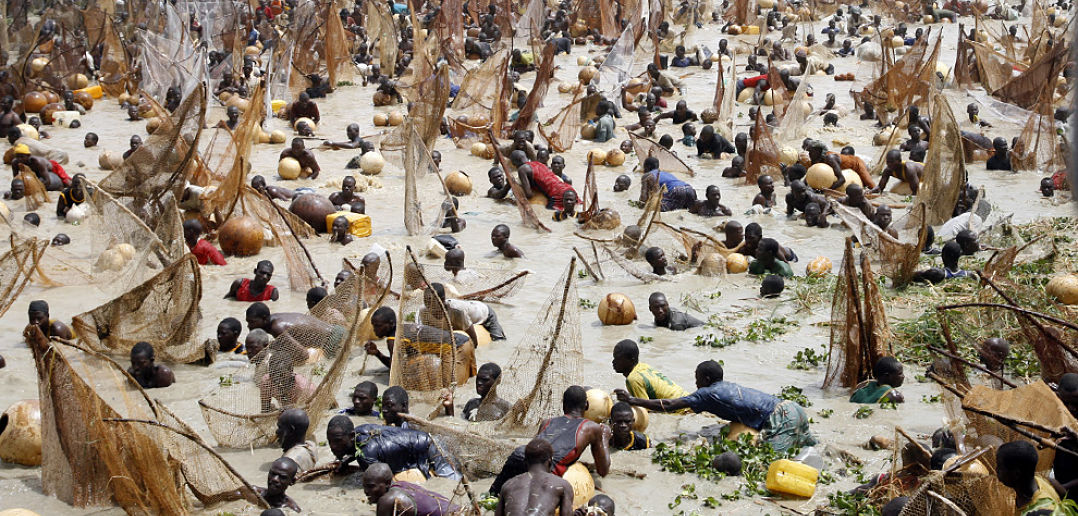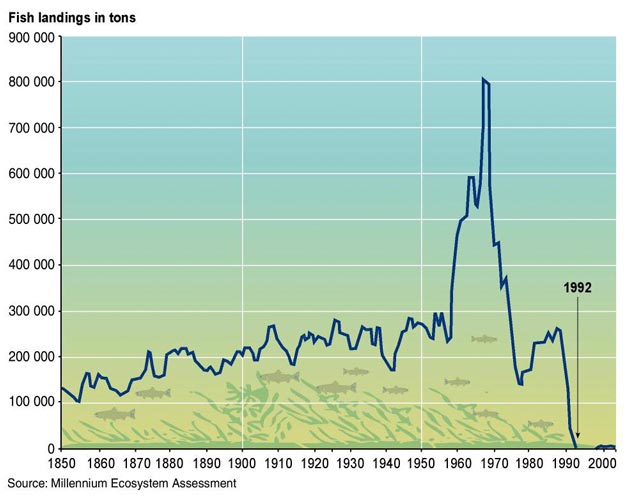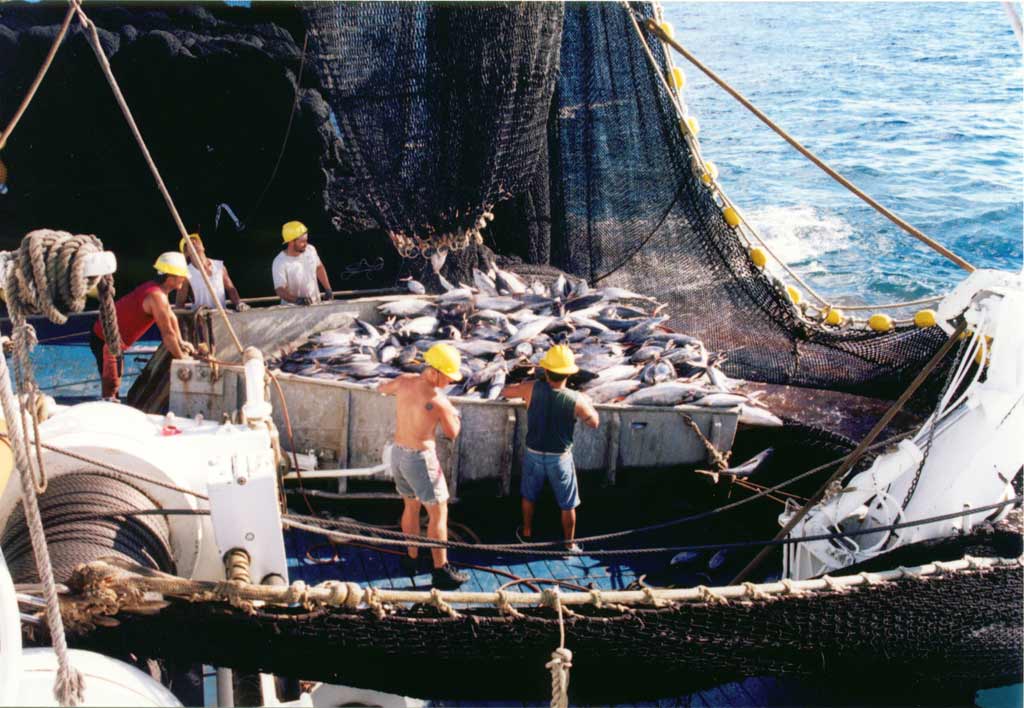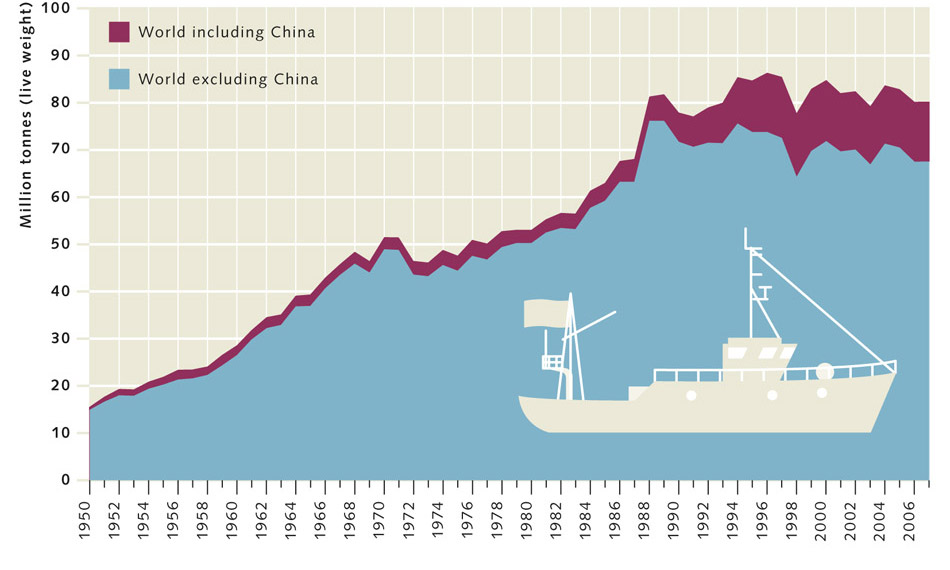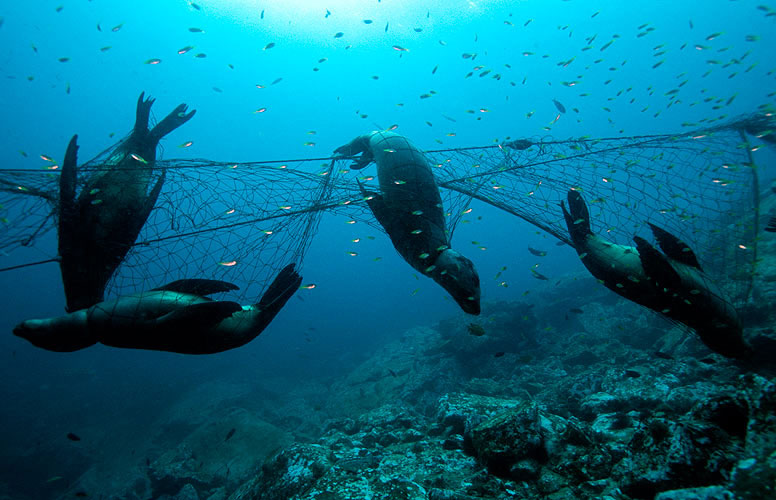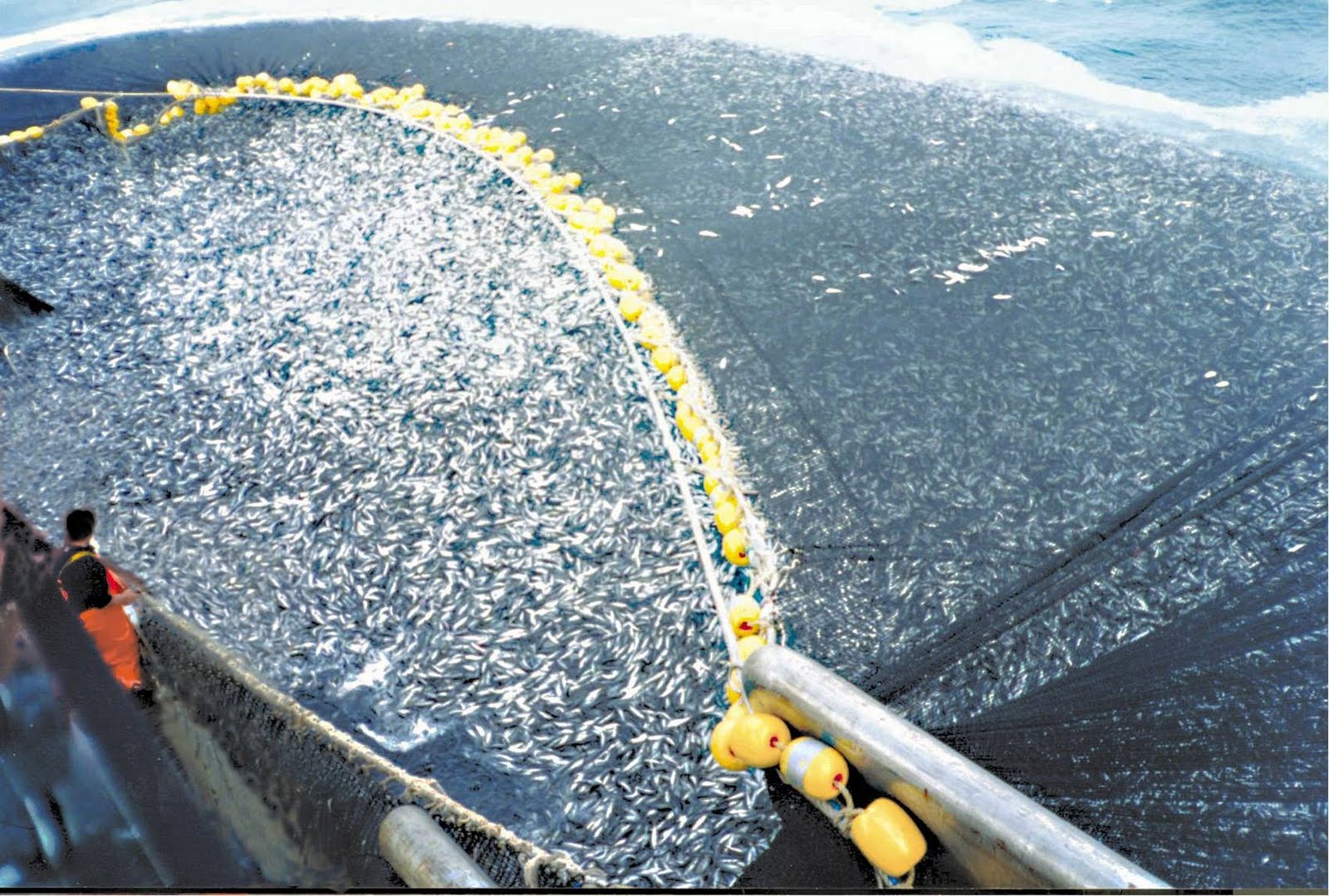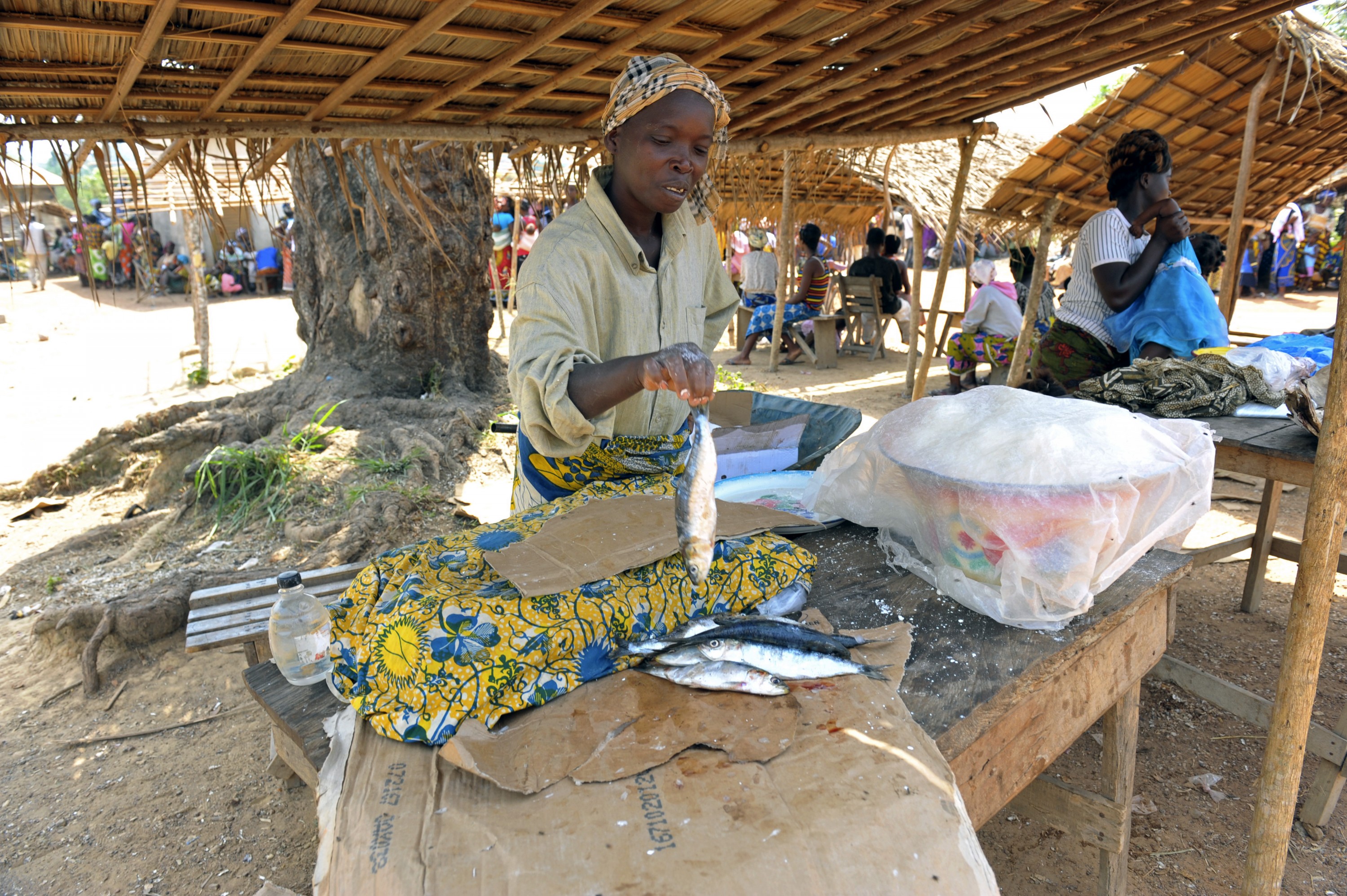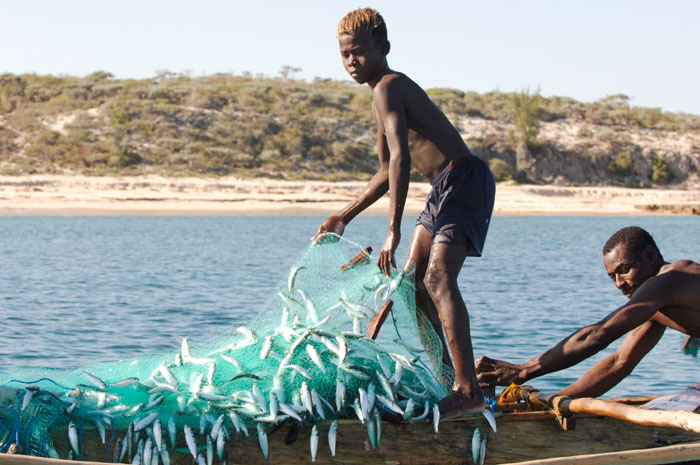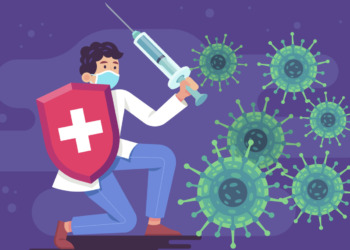Overfishing, climate change and hunger is what you call a “triple whammy”on the planet. You may wonder what they have in common, but at the United Nations, no one doubts that the three are dramatically inter-linked. The point was forcefully made in a recent report from a “high level panel of experts on food security and nutrition” presented this month to the Committee on World Food Security, a 5-day event held in Rome, focused on hunger and poverty issues.
This is an important event – the first meeting was 41 years ago – and while it started as a slow, closed shop set up by FAO and reserved to government officials, it is now open to a slew of major actors on the humanitarian scene, from big United Nations agencies that sponsor the event, all three UN agencies located in Italy (FAO, the World Food Programme, IFAD) to major donor countries (the Netherlands and Sweden stand out) and top charities operating worldwide, like the Bill and Melinda Gates Foundation and farmers’ organizations. In short, a big deal in the humanitarian world.
………………………………………………………………………………………………………….. Related articles : WFP-FROM SMALL TO GIANT STEPS article by Claude Forthomme OIL SPILLS: A DOUBLE STANDARD WORLD article by Hannah Fisher-Lauder …………………………………………………………………………………………………………..This is not one more boring report. It does many things. It updates what we know about the world fisheries crisis and makes clear for the first time the link between fisheries and human nutrition.
Today, capture fisheries and aquaculture provide 3 billion people with almost 20 percent of their average per capita intake of animal protein, and in some countries, this share exceeds 50 percent, for example 54 percent in Indonesia, 71 percent in the Maldives.
So fish consumption is a fact. But with pollution affecting the seas, is high fish consumption detrimental to human health?
In 2010, FAO and WHO organized an expert consultation to review the health risks associated with mercury and dioxins in fish and the conclusion was that the benefits outweighted the risks, reducing coronary disease in adults and improving neurodevelopment of foetuses and infants.
Does this mean that hunger is solved, that all we have to do is fish more and eat more fish? No, of course not, were it that easy! We hit the problems of overfishing and climate change.
Now, overfishing is often presented in dramatic terms. And it is dramatic enough, many fisheries have collapsed since the 1990s, starting with the famous collapse of the Canadian cod stocks in 1992.
That’s when Big Media and scientists started to talk about a “World fisheries crisis“.
FAO was always “less alarmist” (as the report put it) and small wonder, since FAO, as a governmental institution, is inevitably under pressure from its members, in particular major fishing nations, starting with Japan. Given that country’s eating habits and love for sushi, it should come as no surprise that it is deeply committed to defending its right to fish around the world in the deep seas, away from the EEZs, Exclusive Economic Zones, set up by the United Nations to defend riverine nations’ access to their own national fishing grounds. Tuna, among other species, has become a famous “bone of contention”, as Japan, and other nations (but in a less vibrant mode), strive to preserve their right to fish tuna, with the results we all know.
Nonetheless, FAO’s analyses of world marine stocks show that world capture fisheries production has “plateaued” since the mid-1990s around 90 million tons a years, though there is a worrying increase in the over-exploited stocks and in the rate of exploitation of all fisheries – to put it in scientific terms, there has been “a decline in the percentage of non-fully exploited stocks”.
The latest data (2011) show that 29 percent of fish stocks were fished at “biologically unsustainable level”, in one word: overfished. Back in 1974, it used to be half that level, around 15 percent. The United Nations Millenium Development Goals to restore by 2015 overfished stocks are, in FAO’s estimate, “very unlikely to be achieved.” And in fact, they were not achieved.
Large-scale trawling, using massive funnel-shaped nets that are trawled at various levels in the seas or lakes, require huge capital investments and high running costs (these are big ships!), placing them instantly in conflict with small-scale fisheries. As a result, fish landings are concentrated into large ports, at the expense of small-scale fishing communities. Women who are the traditional fish sellers in many countries find themselves displaced as they cannot access the large infrastructure and transportation facilities reserved to industrial fishing. Collisions at sea with small fishermen’s boats are frequent, leading to loss of lives.
For these reasons, in many countries, large-scale trawling has been banned and the list includes, inter alia, Indonesia, Trinidad, Malaysia, Costa Rica, Brazil, Venezuela, Ecuador, Hong Kong, India and Senegal – but many more countries should join this list.
The debate however rages on at a scientific level too, as scientists use different methodologies in their studies, and some end up arguing that overfishing is not as bad as it is portrayed in the media.
In FAO’s view, key to the debate is the fact that “fishing capacities have reached an all-time high and […] capacity-enhancing subsidies have led to resource overexploitation.” In short, there is a “general scientific consensus” that there is an excess of fishing capacity and overfishing. There is a need for action, as recognized by the FAO Committee of Fisheries which has developed (since 1999!) an “international plan of action” for the management of fishing capacity.
A plan of action that is, to an unfortunate extent, simply not applied.
In fact, the problem needs to be further put into context: while it is currently anticipated that production from capture fisheries will remain stable at its 2010 level, aquaculture is expected to exceed that of capture fisheries in 2015. Aquaculture will reach 62 percent of human consumption by 2030 (according to World Bank data). And thanks to aquaculture, total fish production is expected to exceed that of beef, of pork or of poultry already by 2015.
Sounds good? Not really. There are serious and persisting problems of management. Developing countries, in their search for hard currency, are likely to continue to try and sell abroad all their fish production, by-passing local needs. As the report put it: “their fishery resources will remain under very high pressure, and the contribution of fish, particularly to local food security, may decrease”.
Yet, for poor people, fishing is often a primary source of income. Many studies have proved this, for example, recent data collected along the Luilaka and Salonga rivers in the Congo, show that the poorer the people, the more they depend on fishing – not only does it help fight hunger, providing food and nutrition security, it is also better for their health.
Another problem is caused by so-called “reduction”, that is the diversion of important volumes of lower-value fish to be used as fishmeal and oils. These are used three ways, (1) in animal feed for meat production but also for aquaculture itself, (2) food for humans, and (3) food to rebuild predatory fish species stock (cod, tuna…). At this point in time, nobody knows how “reduction” will play out in terms of overall food security.
Add climate change to the mix. Part of the problem and therefore part of the solution to the sustainability of fisheries lies outside the sector. Consider what is happening to coastal areas where human activities impact fisheries causing pollution and ecosystem degradation. Among the major culprits: oil drilling, energy installations, coastal development and construction of ports, dams, waterflow management for aquaculture that destroy mangroves and/or other natural environments. Erosion and pollution destroy habitats that sustain fisheries resources and adversely impact fishing communities, e.g. they are denied access to fishing grounds or coastal settlements are displaced. For poor fishermen, this is a tough life!
Looking to the future, climate change is likely to have highly variable impacts, depending on where the fishery communities live. Some studies have already detected changes in species composition and declines in production, e.g. in some East Africa lakes. In areas where there is high competition for water resources, aquaculture and inland fisheries will be at risk. One study working on available fish data (Xenopoulos et al., 2005), has predicted that by 2070, there will be a 75% loss in fish biodiversity, because river discharge could decrease by as much as 80% in 133 rivers worldwide. Also, in marine fisheries, increased vulnerability is expected, as bad weather and extreme meteorological events cause increased safety risks while fishing and loss of days at sea.
To conclude, the vision that fish will solve the problem of hunger in future as world population continues to expand, may well be just that, a vision. Add to this a further devilish twist: because fish is highly perishable, the amount of fish losses along the food chain can be very important and losses in terms of quality and nutrition are also involved.
Furthermore, in capture fisheries, there are considerable losses caused by discarding fish prior to landing (either because it was caught by mistake or is damaged), and those are not accounted in production statistics. Studies have shown that the volume of discards varies greatly among fisheries, and ranges from negligible in small scale fisheries to very high in some industrial fisheries. For example, in some of the Atlantic herring fisheries, losses can go up to 70-90 percent of the catch. But the problems don’t stop there. Post-harvest losses can also be huge. For example, in India, it is estimated that due to improper storage and handling, up to US$ 2.5 billion are lost every year, equivalent to a quarter of the total value of Indian capture fisheries production.
One last point: sustainable fisheries management is almost impossible to achieve under present conditions of illegal fishing activities. A 2009 study (Agnew et al.) reviewing available data for 54 countries and on the high seas, estimated that globally illegal and unreported fishing accounted for between US$ 10 and 23 billion annually, that is between 10 and 25 percent of total world fish production.
Instruments exist at the UN-international level to regulate this, but they are all “voluntary” instruments. As the report hopefully puts it, they are placed “under the legally binding 2009 FAO Agreement on Port State Measures to Prevent, Deter and Eliminate Illegal, Unreported and Unregulated Fishing, supported by Interpol.” Pity that the “plan of action” that applies this Agreement is not also legally binding. Moreover, to police the system, there is a “growing reliance on Port States to combat non-sustainable fishing practices.” Why? Because “flag states”, i.e. those equipping high sea vessels, clearly have no interest in controlling what their ships are catching…
The days of pirates are not over!
Interview with Oceana CEO, Andy Sharpless by Anne-Hélène d’ Arenberg will be up soon. Come back to check it out.
Post-scriptum: As I finished reading this interesting report (available here), I realized that it was dedicated to the memory of one of its authors, Chandrika Sharma, a scientist and peer reviewer of this report. She disappeared on March 8, 2014, in the tragic “accident” that befell Malaysian airlines flight MH 370 over Ukraine.
Here is the infographic from FAO:



